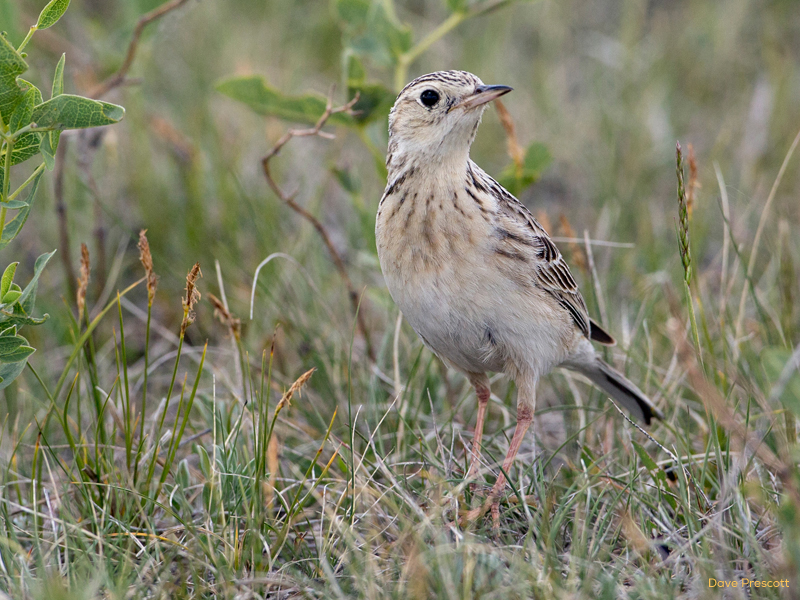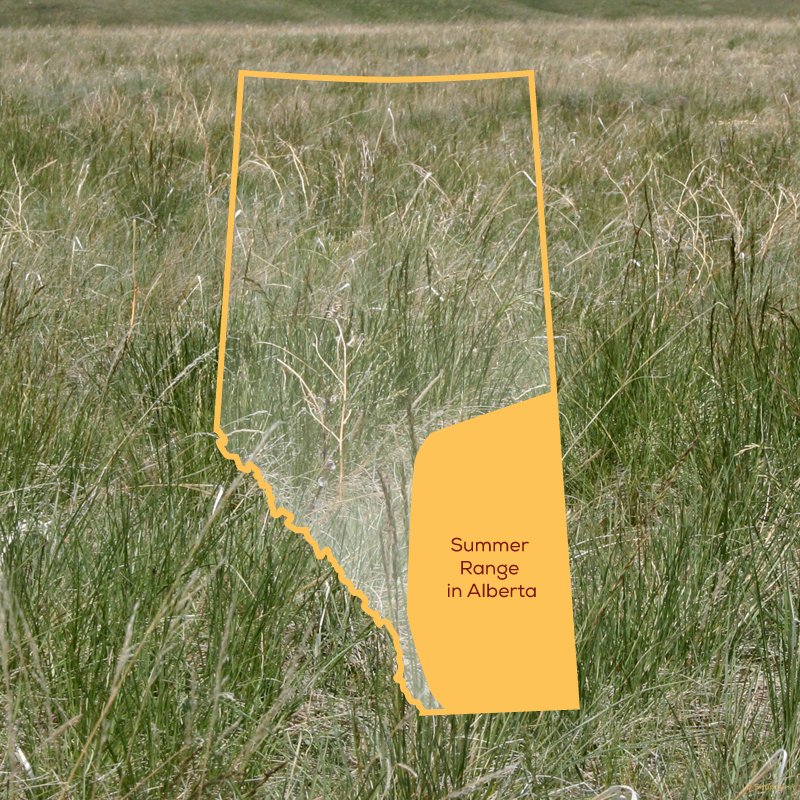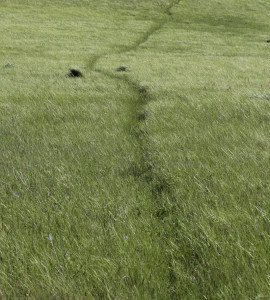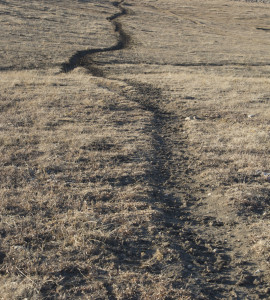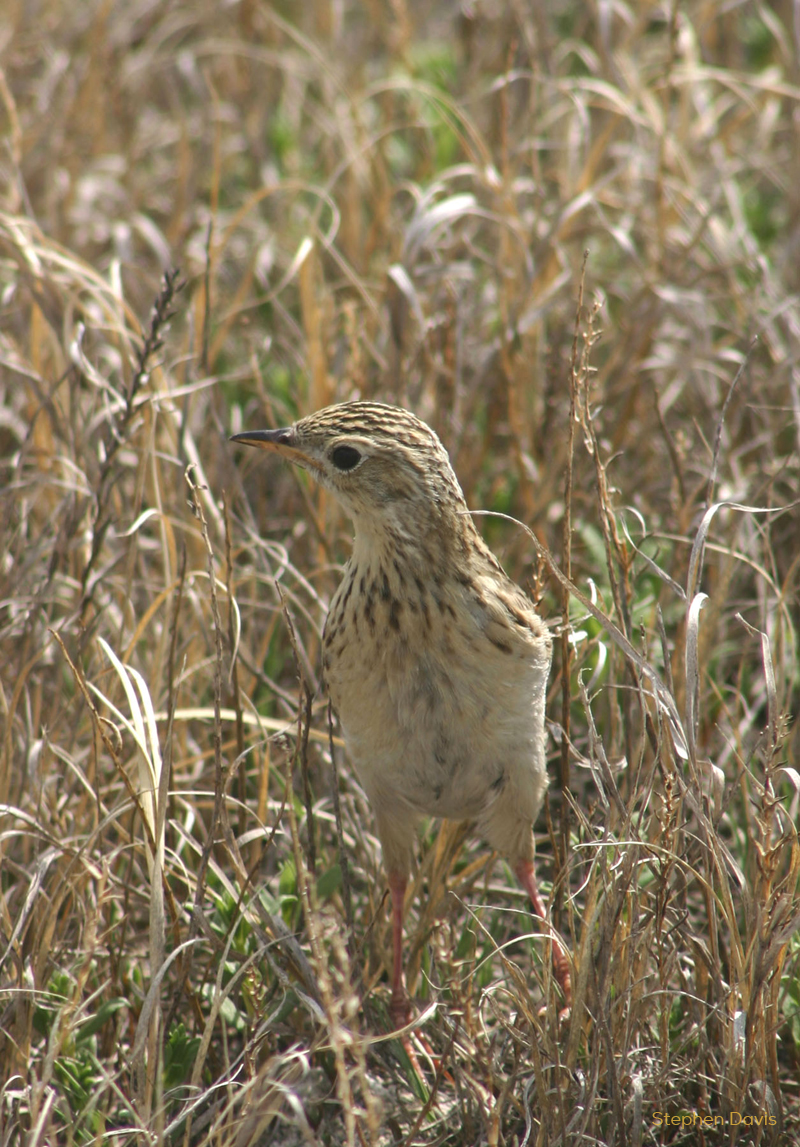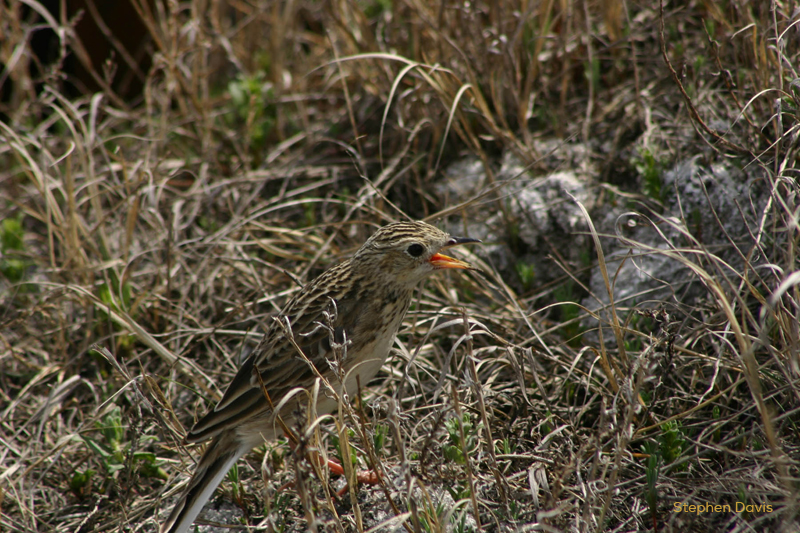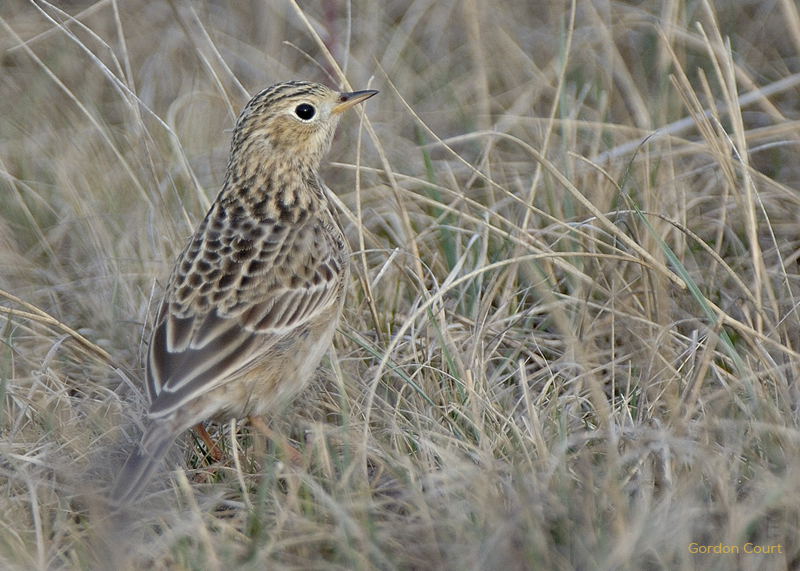Sprague’s Pipit
Anthus spragueii
More Often Heard than Seen
These elusive little brown birds are much easier to find by hearing their distinctive song than by spotting them with your eyes.
High Rise Performance Artists
Sprague’s Pipits perform the longest flight display of any bird. Males fly 100 m upwards during aerial courtship displays and can stay in the air for as long as three hours.
Low Rise Nesters
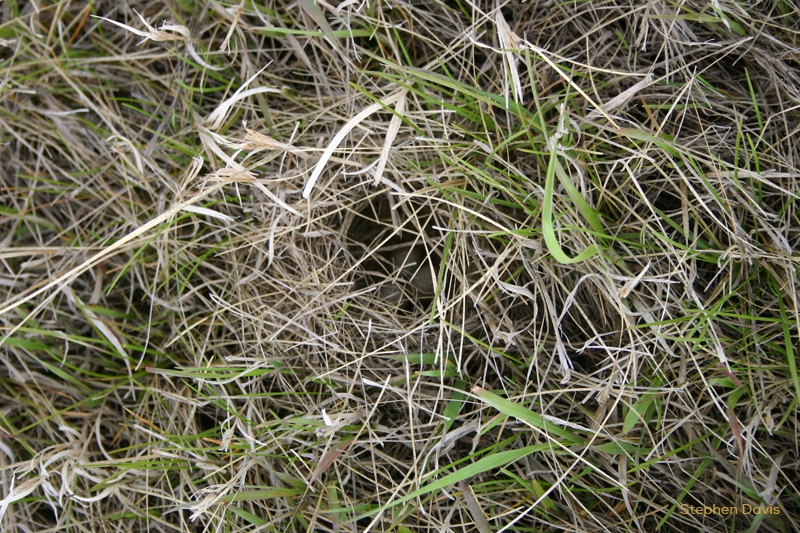
Can you spot the well-concealed Pipit nest?
Their domed nests are built on the ground, among dense and tall grassy vegetation.
Picky Birds
Sprague’s Pipits only nest in native grassland where the grass is “just right” – not too tall and not too short – and where an adequate amount of “old grass” from the previous year remains under the new growth. They avoid cultivated areas and pasture land that contains introduced grass species.
Population
There is no accurate population estimate for Sprague’s Pipits, but their numbers declined by almost 20% from 1993 to 2003.
Current Threats
- Loss and degradation of native grasslands and over-grazing in parts of its summer and winter ranges. The Sprague’s Pipit needs relatively large areas (>145 ha) for breeding and avoids edges of roads, well sites, pipelines and other disturbances.
- Pipits avoid areas with high densities of oil and gas wells.
- Pesticides may be toxic to Pipits if ingested and may affect the availability of insects that they feed on.
- Invasion of woody or exotic species in native grassland can reduce suitability for Pipits.
- Drought can reduce grass cover and prey abundance and excessively wet conditions can impact nesting success and prey availability.
Species@Risk Quiz
Test your knowledge about Alberta’s grassland species at risk
Sprague’s Pipit
Question 1 |
Sprague’s Pipits build their nests:
In lone trees on the prairie | |
On the ground | |
In burrows |
Question 2 |
Sprague’s Pipits prefer to live in grasslands that are:
Heavily grazed by cattle | |
Burned regularly by prairie fires | |
Lightly or moderately grazed by cattle |
Question 3 |
Male Sprague’s Pipits always sing while:
Perched on a prominent rock in the prairie | |
Dancing on the ground | |
Flying very high up in the air |
Question 4 |
Predators of Sprague’s Pipit eggs and young include:
Black-billed Magpie | |
Northern Harrier | |
Mice | |
Garter Snake | |
All of the above |
Public
- Educate yourselves and your family about Sprague’s Pipits and their role in the grassland ecosystem. Challenge yourself to find a male Pipit singing its courtship song way up high above a large tract of native grassland.
- If you have good bird identification skills, consider taking on a North American Breeding Bird Survey route.
- Support native grassland habitat by choosing grass-fed meat in the grocery store.
- Voice your support for native grassland conservation with your political leaders.
Landowners
- Hang on to your native grasslands and keep them healthy.
- Adopt grazing practices that allow at least 50% carryover of vegetation and that minimizes heavy grazing on native grasslands, especially during the Pipit nesting season (May – July).
- Adjust stocking rates based on environmental conditions.
- Avoid using pesticides on or near native grassland.
- Consider restoring some of your degraded grasslands or marginal croplands with native vegetation typical of your area.
- Consider the use of fire as a range management tool to reduce heavy litter accumulation and shrub encroachment.
- Remove old buildings and consult with a wildlife biologist on the potential benefit of removing old shelterbelts that may attract predators to your native grassland.
- Contact MULTISAR to discuss what management practices might be beneficial to the Sprague’s Pipit on your property.
What MULTISAR Does
- Surveys native grasslands on collaborating ranches to increase our knowledge of the species’ distribution, relative abundance and population trends.
- Works with landowners to develop grazing plans that promote good habitat for Sprague’s Pipits and other grassland birds, as well as rangeland sustainability.
- Assists landowners in restoring some of their degraded grasslands and converting marginal croplands back to native grassland vegetation.
- Educates the public about Sprague’s Pipits, their habitat requirements and appropriate management practices.
